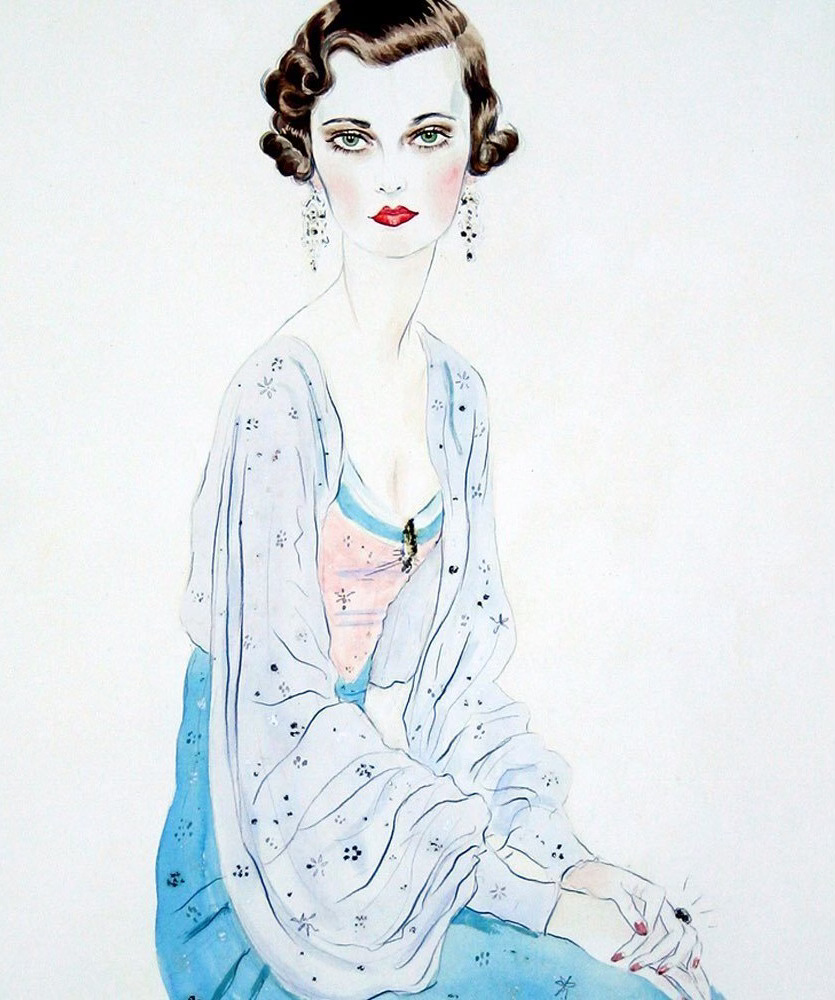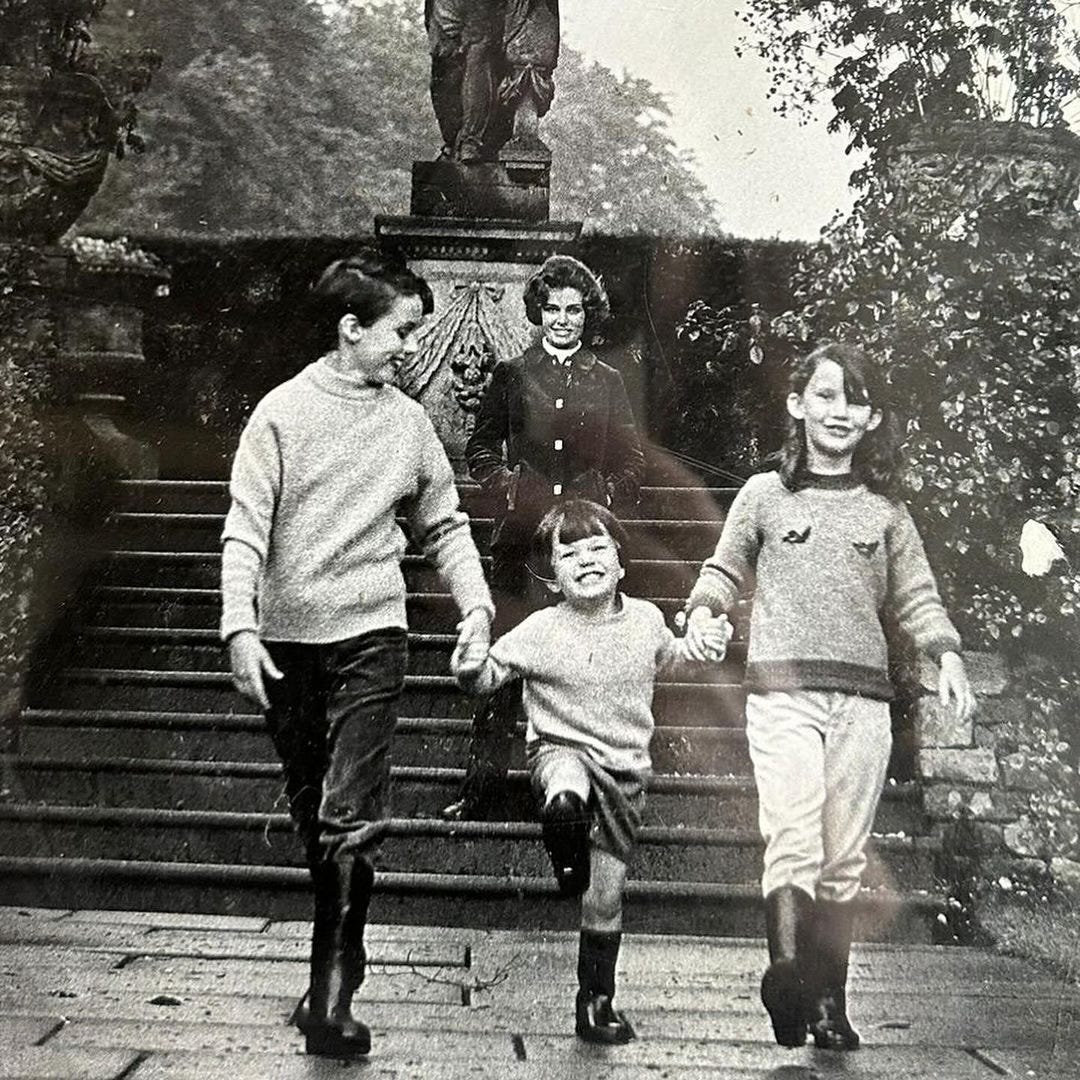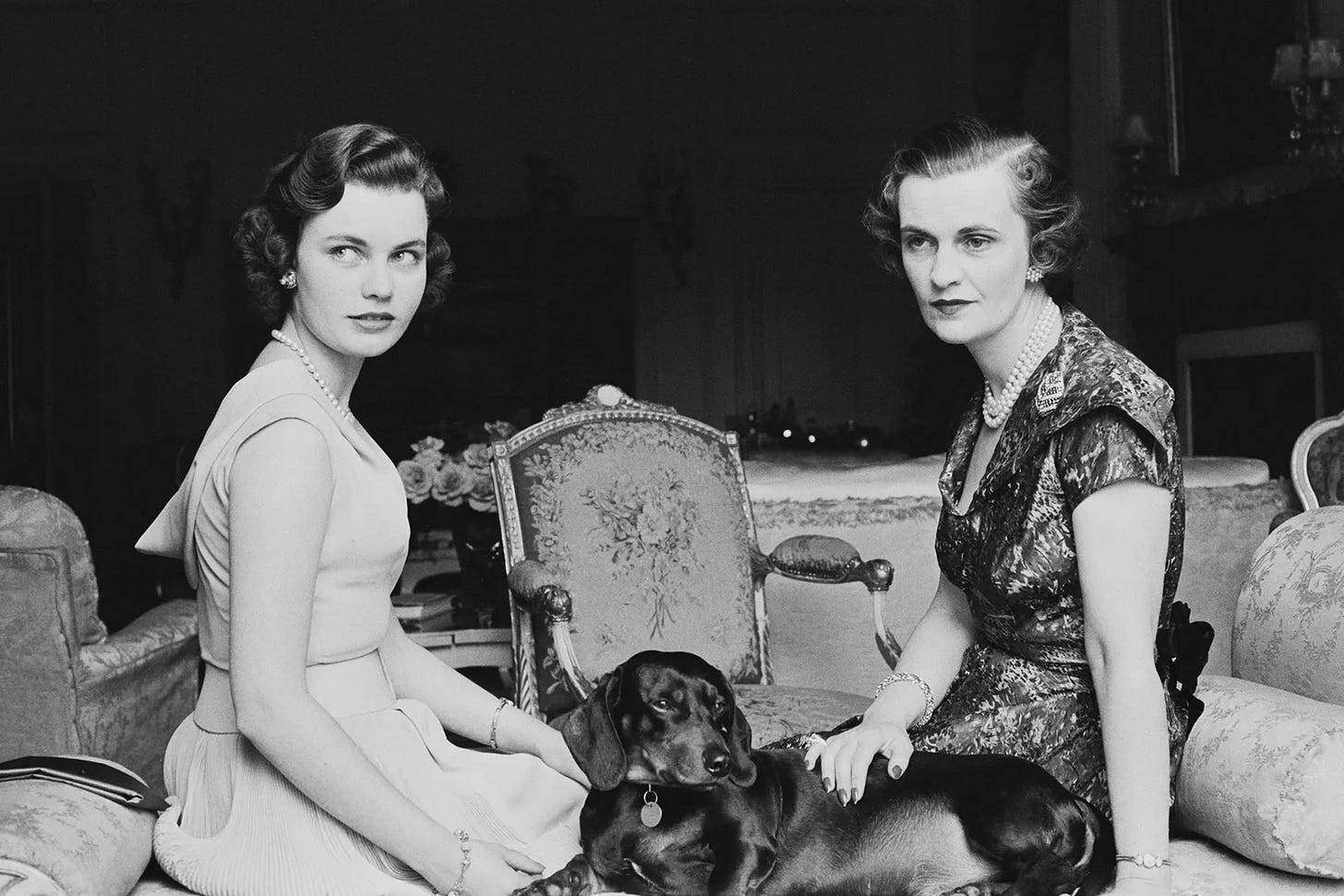“I had wealth; I had good looks. I had intelligence. I had breeding. And I also had a disastrous marriage.”
— Margaret Campbell, Duchess of Argyll

Margaret Campbell, Duchess of Argyll, was a prominent socialite known for her beauty, charm, and high-profile lifestyle. Born in 1912, she grew up in privilege and became a well-known figure in British high society. Her life was filled with glamour and challenges, making her one of the most talked-about women of her time.
Her daughter, Frances Sweeny, Duchess of Rutland, took a different path, embracing a quieter and more private life. Born in 1937, she became the Duchess of Rutland after marrying Charles Manners and focused on her role at Belvoir Castle, one of the most splendid historical residences in the UK.
Together, their lives offer a fascinating glimpse into aristocratic society in the 20th century.
Table of Contents: Family Background / Margaret / Disastrous Divorce / Falling Out / Frances / Belvoir Castle: A Historic Jewel of England / Later Life
If you aren’t subscribed yet, hit the subscribe button below to receive the Adorable Stories every weekend, directly in your inbox:
Family Background
Born on June 19th, 1937, Margaret Frances Helen Sweeny (later known as Frances Manners, Duchess of Rutland) was the first child of Margaret, Duchess of Argyll, and her first husband, Charles Francis Sweeny.
Charles Francis Sweeny (1909–1993) was an American-born socialite, businessman, and celebrated sportsman whose charm and larger-than-life personality made him a prominent figure in both American and European high society.
Born in Scranton, Pennsylvania, into a wealthy family with significant interests in coal mining, Charles Sweeny attended St. Paul’s School and later New College, Oxford, where he excelled as an athlete, particularly in boxing. He gained fame as a glamorous figure in London during the interwar years, becoming a central figure in the local social scene. A man of great charisma, Sweeny was also a keen supporter of aviation and military efforts, serving in the Royal Air Force during World War II.
Frances’s mother, Margaret, Duchess of Argyll, was born Ethel Margaret Whigham on December 1st, 1912 in Newton Mearns, Scotland, into a wealthy and influential family.
Frances’s grandfather, George Hay Whigham, was a Scottish millionaire and chairman of the British Celanese Fibre Corporation (a major multinational company specializing in the production of chemical-based materials, including cellulose acetate), and Margaret grew up in luxury, dividing her time between London, New York, and Scotland.
Renowned for her striking beauty and impeccable style, Margaret quickly became a celebrated socialite, captivating public attention with her charm and elegance.

Margaret
Margaret’s high-profile lifestyle made her a darling of the British press.
She married Charles Francis Sweeny on February 21st, 1933. Their wedding was a highly publicized event, attended by over 2,000 people at Brompton Oratory in London, and Margaret wore a gown by Norman Hartnell (who was best known for his work for the ladies of the royal family) that later became iconic.
Margaret Argyll and her husband had difficulties to conceive and she suffered eight miscarriages and given birth to a stillborn daughter prior to Frances’s birth in 1937.
Frances had a younger brother, Brian Charles Sweeny, born in 1940: in their youth, the two siblings were largely raised by their mother’s cook.
Frances early years were steeped in the glamour of her parents’ high-society lifestyle. Margaret was a prominent socialite in Britain, while Charles, though American by birth, was also well-integrated into British aristocratic circles.
As a teenager, Frances was nicknamed “Frosty” due to her cool, aloof demeanor and aristocratic poise which often projected an air of detachment.
In reality, Frances’s childhood was far from idyllic. In 1947, when Frances was 10, her parents’ marriage ended in a bitter and highly publicized divorce due to incompatibilities and allegations of infidelity on both sides. The divorce trial ended with Charles gaining custody of their children, which was a shock for Margaret and a scandal for the British society.
In 1951, Margaret re-married, this time with Ian Campbell, 11th Duke of Argyll. The marriage elevated Margaret to the title of Duchess of Argyll, but it was fraught with difficulties from the very start.
Ian Campbell, who had inherited the dukedom in 1949, was twice divorced and deeply in debt at the time of their marriage. The relationship quickly soured due to his financial troubles, their infidelities, and mutual distrust.
Realizing the profound incompatibility between Margaret and her second husband, Frances and her brother Brian encouraged their mother to speedily walk away from this relationship without contest.
Disastrous Divorce
Margaret was unable to let it go though, and decided to challenge the Duke of Argyll in court, with disastrous results.
Their bitter divorce trial became infamous for the allegations that Margaret had a total of 88 lovers during their 12-years relationship and the explicit Polaroid photographs submitted by the Duke’s defence, including a famous one revealing an unknown “headless” naked man with Margaret, who wore nothing but a three-string pearl necklace.
After losing her second divorce trial, Margaret supposedly spent the rest of her life — and almost all her money — on more ill-judged legal proceedings against her former second husband, mostly focused on jewellery and other personal belongings that he allegedly stole from her before the divorce.
None of these trials proved successful and Margaret lost most of her wealth in the exorbitant legal fees which followed.
Falling Out
Frances was initially close to her mother Margaret but the two had a falling out after the Duchess of Argyll insisted her daughter raise her children as Roman Catholics.
This, coupled with the embarrassment Frances felt over the widespread attention her mother’s second divorce was receiving, led to a two-decade rift between them to the extent that an urban myth emerged about a chance encounter at a cocktail party.
According to the story, Margaret introduced herself by saying, “Hello, I’m your mother,” to which Frances is said to have coolly replied, “I remember,” before turning away.
Mother and daughter did not reconcile until 1991.
Margaret Campbell, Duchess of Argyll, died on July 25th, 1993, at the age of 80. She passed away from natural causes in a nursing home in London, UK. Her later years were marked by declining health and financial difficulties.
The identity of the man in the Polaroid remained a mystery for decades, until barely a month after her death it was revealed to be none other than Hollywood actor Douglas Fairbanks Jr., (previously featured in the Adorable Story #101).
Frances
Frances Sweeny married Charles Manners, 10th Duke of Rutland, on May 15th, 1958. Their marriage made her the Duchess of Rutland and brought her into one of Britain’s most prominent aristocratic families, centered at Belvoir Castle in Leicestershire.
Charles Manners (born on May 28th, 1919) was the eldest son of John Manners, 9th Duke of Rutland, and Kathleen Tennant, a member of the influential Tennant family (the patriarch, Charles Tennant (1768–1838), founded St. Rollox Chemical Works, a chemical manufacturing empire based on his invention of a bleaching powder process, which revolutionized textiles and other industries, and operated continuously from 1799 until 1964).
Charles Manners was educated at Eton College, followed by Trinity College, Cambridge, where he studied history.
Like many men of his generation, his life was interrupted by the outbreak of World War II, where he served with distinction in the British Army, achieving the rank of Captain in the Coldstream Guards and the Leicestershire Yeomanry.
Frances Sweeny and Charles Manners, 10th Duke of Rutland, were married on May 15th, 1958 at Caxton Hall in Westminster, London.
Together, the couple had four children.

Belvoir Castle: A Historic Jewel of England
Belvoir Castle (pronounced “Beaver,”) is one of England’s most iconic and historically significant stately homes. Situated in the picturesque countryside of Leicestershire, the castle has been the ancestral seat of the Dukes of Rutland for over a thousand years.
The current castle, a striking example of Regency Gothic Revival architecture, was rebuilt in the early 19th century after a fire destroyed much of the previous structure. Designed by architect James Wyatt, the castle houses an extensive collection of fine art, tapestries, and antiques, and its lavish interiors have been featured in popular films and television series, including The Crown and The Young Victoria.
Today, beyond its architectural splendor, Belvoir Castle is an important cultural and economic hub, hosting regular public tours, events, and outdoor activities that draw visitors from around the world.
Later Life
Despite their seemingly ideal match, Charles and Frances separated in 1971, after 13 years of marriage.
Drawing a lesson from her parents’ highly publicized divorces, Frances and Charles chose to keep the reasons for their separation private and never officially divorced.
Frances continued to use the title of Duchess of Rutland and remained a respected figure associated with the family estate, Belvoir Castle, even after their separation.
The Duchess, fluent in seven languages, was a keen breeder of Arabian Horses, following a family tradition dating back to the 4th Duke of Rutland.
Following the 10th Duke’s death in 1999, Frances moved out of Belvoir Castle, handing over a big box of keys to the new Duchess, and relocated to the smaller Belvoir Lodge on the Estate, while the Castle was taken over by the 11th Duke and Duchess.
Frances Manners passed away peacefully at Belvoir Castle in January 21st, 2024, at the age of 86.
—Alberto @
Do you know anyone who would love to read this Adorable Story? Show your support by sharing Adorable Times’ Newsletter and earn rewards for your referrals.











